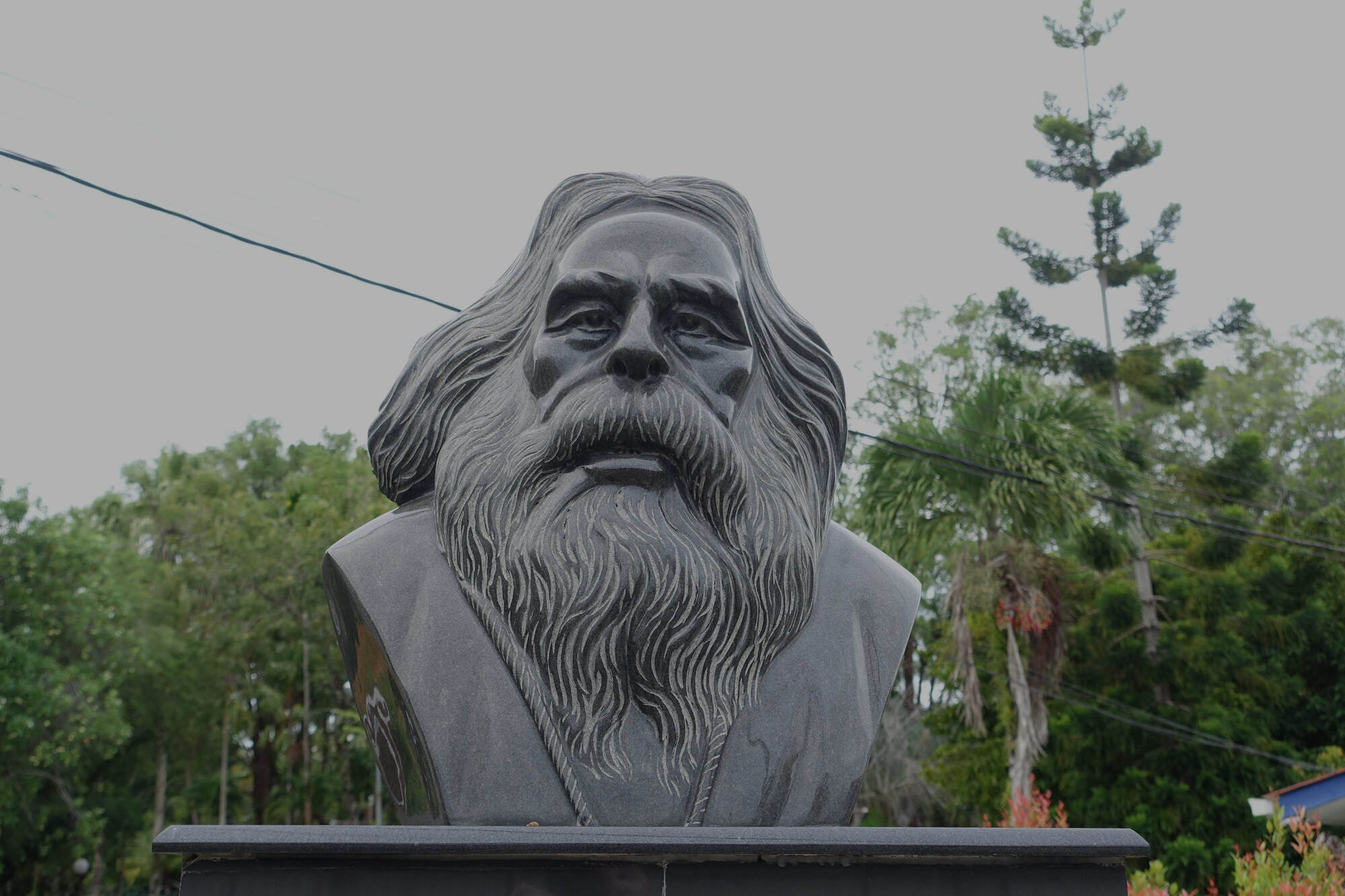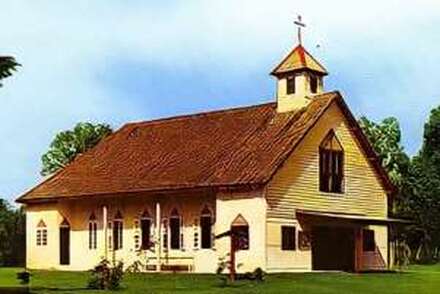
Without understanding and knowing our roots we cannot
understand today. Let us honor the past, celebrate the present and embrace the future together.
BEGINNINGS OF THE LOCAL CHURCH
The mission in Labuan and the North of Borneo began with the arrival of Msgr Don Carlos Cuarteron, the first Prefect Apostolic of Borneo.

Born Don Carlos Cuarteroni y Fernandez, on the 19th September 1816, to Juan Cuarteroni and Ramona Fernandez, residents of the Spanish port city of Cadiz, Don Carlos grew up in the culture of the sea, for which Cadiz had been famous. His family was engaged in trading and shipping in the Philippines and the Far East. His father Juan had left native Genoa the century before attracted by the prosperity of Cadiz, hub of the trading with the Spanish American colonies.
Accompanied by a relative, Don Carlos left home for Manila when he was barely 13 to pursue a career in navigation at sea. Schooled on ships plying between the Philippines and China, the young cadet worked his way up the ranks so quickly that before his 25th birthday, he was a full-fledged captain in the Navy of the Philippines, a certified navigator licensed to pilot a ship anywhere on the globe. If not for his extraordinary skill, and remarkable strength of character, Don Carlos would have ended up like thousands of forgotten mariners of the 19th century. But he was truly different.
Our first Prefect Apostolic came from a big family. There were at least nine siblings. Flourished from trading at sea, the family had means enough to provide the young Carlos with the best education Cadiz could offer. Predictably, three brothers took up career at sea, but two became missionary priests in the Far East. When Carlos left home he brought along two precious family gifts: love for the sea, and a deep Catholic faith. He was ordained a priest on 9 April 1854
Borneo was properly recognized as a mission when the Congregation of the Propagation of the Faith (Propaganda Fide) set up the Prefecture Apostolic of Labuan and Borneo on 4 September 1855. Msgr Don Carlos Cuarteron, a member of the Third Order of the Trinitarians at that time, was made the First Prefect Apostolic. His vision of mission was to announce the Gospel in Borneo and in the neighbouring islands, to build groups of redeemed slaves into self-supporting Christian communities and to make mission work and commerce go hand in hand. He tried to do this with the help of the Milan Foreign Missionaries (PIME). The mission did not bear much fruit as Cuarteron tried to cast his net too wide and too quickly. However, he did manage to redeem around 50 individuals from slavery. In December 1879 he returned to Rome and resigned as Prefect Apostolic. He went home to Cardiz and died there on 12 March 1880.
After Cuarteron, the Borneo Mission was allocated to the St Joseph’s Society of Foreign Missions or Mill Hill Missionaries on 19 March 1880. On 30 March 1881 Fr Thomas Jackson was appointed as the second Prefect Apostolic. Born in Preston in 1843, he was ordained a priest in 1879. He arrived in Kuching from Singapore on 24 Aug 1881. He reached Labuan on 29 July 1881 and joined his confreres Fr Edmund Dunn, Fr Aloysius Gossens and Fr Daniel Kilty. The early moves were again merely exploratory. There was little attempt to put down firm roots in any one place due to thin distribution of population and the long distances to make contact with people. However, he was the one who brought in the Franciscan Missionaries of St Joseph (White Sisters) on 5 July 1885 in Kuching and in Sandakan on 5 Nov 1892. He resigned on 20 October 1895, returned to England and died at Manchester on 1 April 1916.
The church in Labuan was then helmed by successive Mill Hill Missionaries and later on, priests from the local population.

EVOLUTION OF THE CHURCH IN LABUAN

1931

1934
Fr. Aloysius Stotter built the first substantial church at the Everett Estate (present site) in 1931 and was named Corpus Christi. Between year 1963 and 1964, Fr. Louis Dassen renovated and extended the front portion of the building. The Church was demolished and rebuilt in 1970 during the tenure of Fr. Aloysius Tung. It was then renamed Church of the Blessed Sacrament and blest on 30th April 1972 by Bishop James Buis. Over the years, the building had undergone several rounds of renovation to cater increasing numbers of parishioners. The Church was demolished in 2020 to pave way for a more dignified house of prayer. Find out more about our new building by clicking here.

1970

2020
